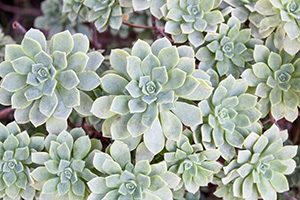Wendy's Wanderings
October 11, 2023
Ghost Story
My neighborhood is going crazy with fall decorations and I am inspired by their creativity. There are displays of pumpkins, skeletons, witches, and ghosts. It got me thinking about the real ghosts you might encounter in Florida. Not the spooky kind — the botanical kind. But you will have to get out your hiking shoes and have a little luck to see a couple of them.
I have only been fortunate to see the ghost orchid once in my life. Deep in the wilds of the Fakahatchee strand in Collier County lives this endangered, near-mythical orchid whose beauty is revered. Its white flowers are born on leafless stems that adhere to cypress trees found way back in the swamp. It is called the ghost orchid because when the flowers move in the wind, they look ghostlike.
The ghost orchid (Dendrophylax lindenii) has been the subject of crimes and mysteries. It was the belle of the ball at the famous Chelsea Flower Show this year in London and researched here at the University of Florida. Dr. Michael Kane and his graduate students discovered methods to culture the plant in the lab. They were then able to successfully reintroduce ghost orchids in their natural habitat in Southwest Florida. The work of Dr. Kane and his team, along with their partnership with the U.S. Fish and Wildlife Services will hopefully preserve this endangered plant’s presence in the wild. Learn more about Florida's native orchids at Gardening Solutions.

Ghost plant, Monotropa unifloria
Another mysterious plant you may discover when exploring natural areas is called ghost plant, Indian pipe, or its botanical name, Monotropa uniflora. It is always a shock to see these small groups of white tubes emerging from deep leaf litter. Ghost plant has an eerie, almost translucent, white color and is just a single nodding stem that is about four to eight inches tall. Since this white or pinkish-white plant lacks chlorophyll, it is sometimes confused with a fungus or mushroom, but it truly is a vascular plant. Ghost plant exists in a partnership with fungi and trees. It doesn’t feed directly off its host tree, but instead taps into the mycorrhizal organisms that are living on the tree's roots. This unique plant is considered a perennial wildflower and is found in many counties in Florida.
If you are looking for a creepy plant you can actually grow at home, an easy one is also commonly called ghost plant. Botanically known as Graptopetalum paraguayense, this succulent forms four-inch rosettes of thick, fleshy leaves. The standard-issue color is a ghostly opal gray, but you can also find cultivars in bronze, peach, and lavender tones. Ghost plant succulents spread easily and form large clumps. Limited waterings and bright sunlight keep this spooky plant happy. It is surprisingly cold tolerant (into the high teens) and would make a nice addition to rock gardens or outdoor planters.
You can create a spooky fall display with other plants, too. Think about Spanish moss, angel’s trumpet, devil’s backbone, and voodoo lilies for your horticultural themed display.
-- Wendy Wilber

Ghost succulent, Graptopetalum paraguayense

